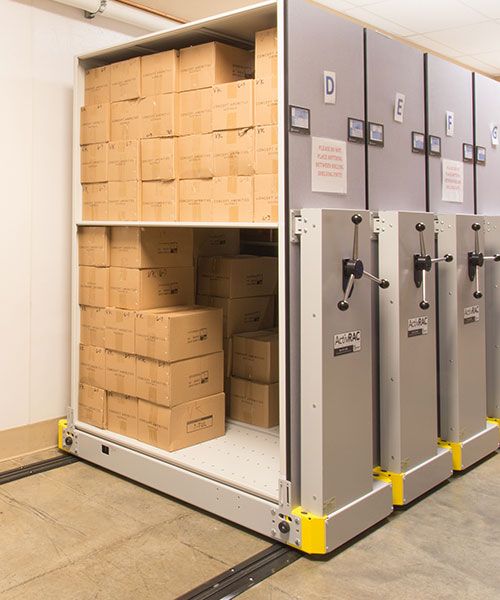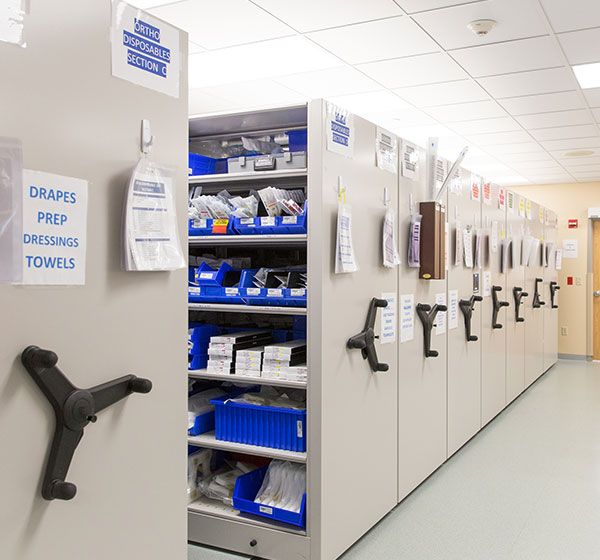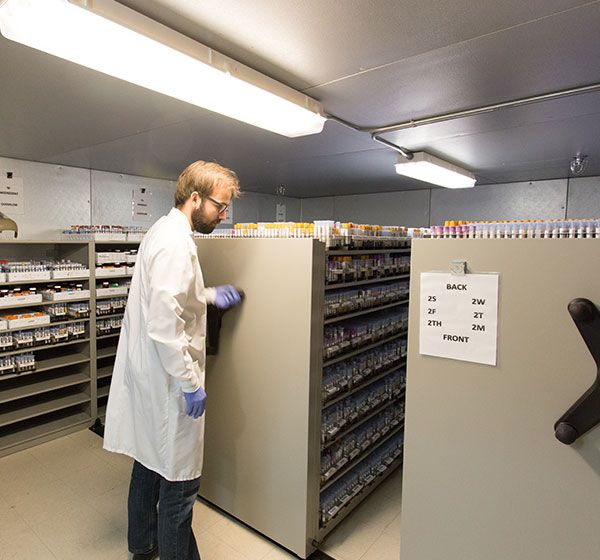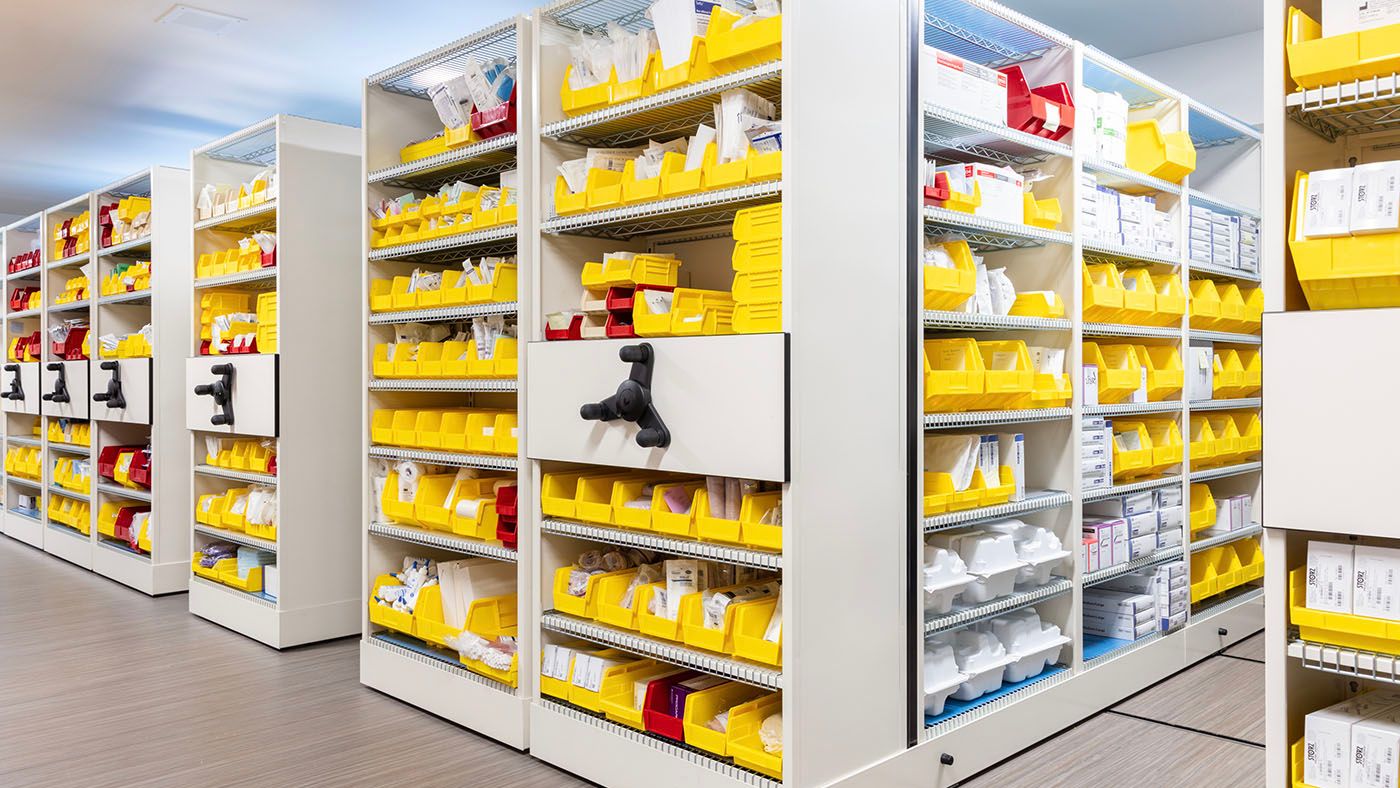Storing Preparedness Equipment (PPE) in Hospitals, Labs, and Clinics
Gain capacity in existing healthcare storage spaces.
Shortages and supply chain disruptions during the COVID-19 crisis have caused many healthcare institutions to conclude that the safest, smartest way to ensure readiness is to acquire and store their own personal protective equipment (PPE). Although this is a prudent strategy, it does pose a practical question: Where can these items be stored? They take up a lot of space, and every cubic inch that’s devoted to storage is space that can’t be used for patient care.
Gaining Storage Capacity for PPE
To gain more capacity for healthcare PPE storage, some institutions are temporarily renting containers or storing boxes in offices or corridors. Those are acceptable short-term solutions, but it’s essential to develop long-term strategies for adding storage capacity. Inconvenient storage can lead to disorganization, which in turn can result in lost or expired inventory, wasted time, wasted space, and, most importantly, less time and space for patient care.

Spacesaver High-Density Storage
One of the most effective ways to increase long-term storage capacity is to use compact mobile storage systems, which consist of shelving that moves along rails installed into or on top of the floor. Compact mobile systems have been a familiar sight for decades in doctor’s offices and hospitals for storing records or x-rays; now they’re used to store a variety of supplies and equipment throughout healthcare facilities large and small. These safe, robust systems eliminate wasted aisle space to condense stored items into a compact area, resulting in more storage capacity or more space for patient care.
Here are three ways that healthcare facilities are using Spacesaver systems to better serve patients and staff by saving space, streamlining inventory and other workflows, and maintaining a clean, organized environment.
1. Compact Mobile Storage in a Sterile Core
Keeping surgical kits sterile, organized, and accessible
This hospital needed to relocate surgical kit storage to free up space for state-of-the-art equipment in surgical procedure rooms. Staff decided to store sterile supplies and instruments in a centrally located sterile supply area, or sterile core, to streamline processes and provide immediate access to items without the threat of cross-contamination.

To enhance storage capacity in the relatively small space, the planning team worked with Spacesaver to design a high-density mobile storage system to eliminate wasted aisle space. When personnel need to stock or retrieve a kit, they simply turn the mechanical-assist handle to quickly and easily open an aisle for access.
This solution saves space while also keeping supplies clean and organized so they’re right where they’re needed, when they’re needed, ensuring efficiency and optimizing patient care.
2. Compact Mobile Pharmacy Storage
Adding capacity in “landlocked” pharmacies
Space is always at a premium in hospitals, and the USP 800 regulations for hazardous drug storage have created an even greater space crunch in inpatient pharmacies. These pharmacies are usually “landlocked” inside hospitals with no room to expand.
Although every pharmacy is different, compact storage products are typically used in two ways: storing hazardous drugs efficiently and securely in the new rooms that must be constructed to bring inpatient pharmacies into compliance with updated regulations, and recovering space that was lost elsewhere in the pharmacies when these rooms were constructed.

Compact mobile storage systems are ideally suited to pharmacies’ needs for efficiency, organization, and security. The systems can be installed on top of existing floors and can optimize space horizontally and vertically in small spaces or large rooms. To help protect fragile glass bottles and vials, powered systems have a soft-start and soft-stop feature that offers even more shock protection when combined with shelf dividers, bins and bin fronts, and anti-tip rail. Systems can also be locked for enhanced security measures, and to prevent unauthorized access.
3. Compact Mobile Cold Storage
Increasing capacity by 130 percent
This pathology laboratory invested in a walk-in refrigerator and wheeled carts to store biological specimens for medical testing, but the cart system became crowded and cumbersome as the lab’s business grew. The carts’ capacity was limited, so the facility was essentially paying to cool empty air. Staff needed a safe and efficient solution for storing and retrieving a growing number of refrigerated samples, and the system needed to function flawlessly in near-freezing temperatures.
After evaluating a variety of options, the project planning team agreed that a compact mobile system would best meet their goals. Spacesaver worked with staff to optimize the space, which involved measuring the sizes of test tubes and vials, repurposing the shelving the lab had already purchased, and designing a fully-configured system that neatly filled the allotted space.

The project increased storage capacity by at least 130 percent and improved turnaround time, because staff no longer have to move several carts to get to the sample they need. The lab’s staff can now process around 17,000 samples in a 24-hour period. In addition, the compact mobile storage system has created a more compact thermal mass, allowing the cooler to operate more efficiently. The system’s convenience, durability, and efficiency have also boosted staff morale and improved customer service and patient care.


